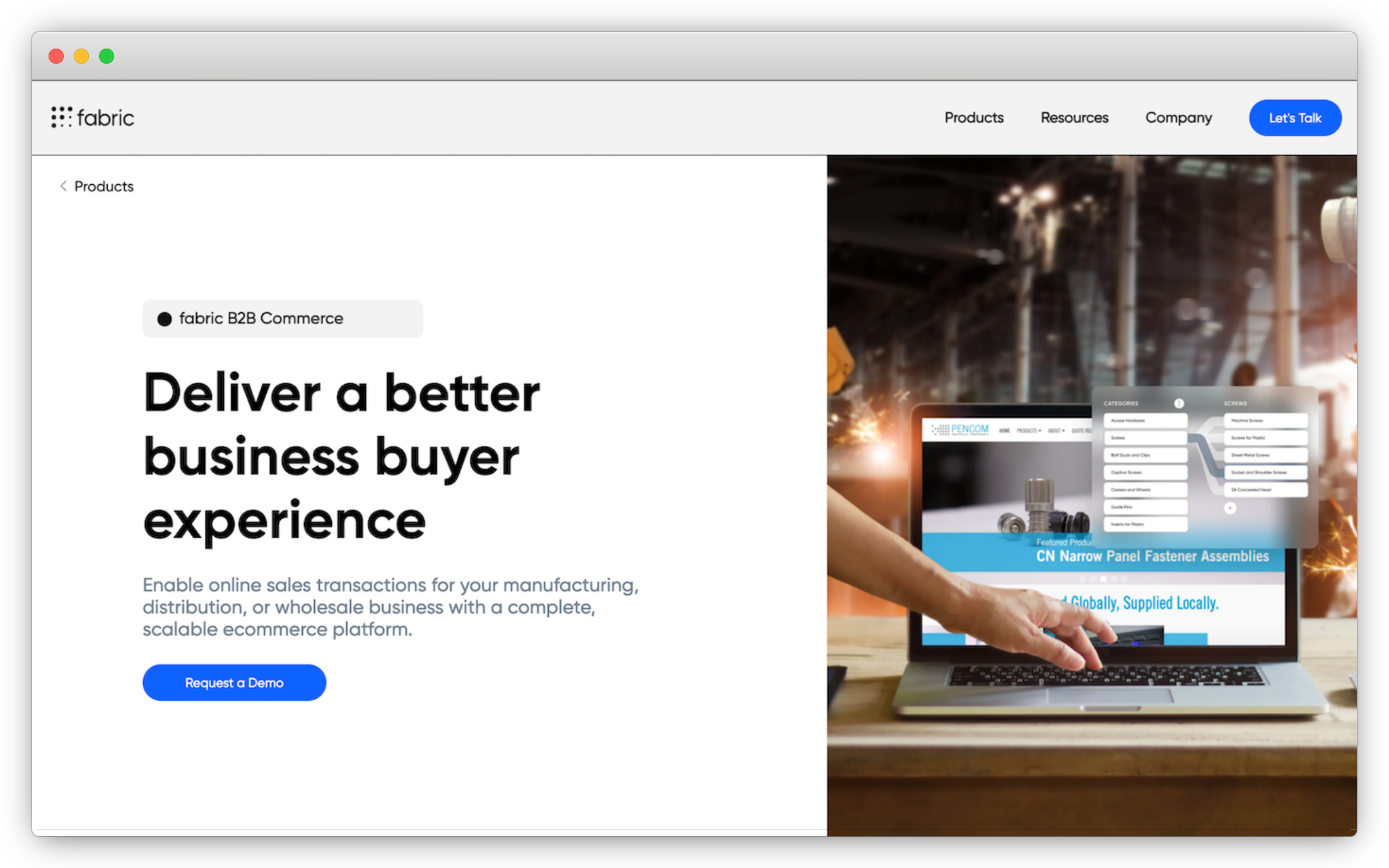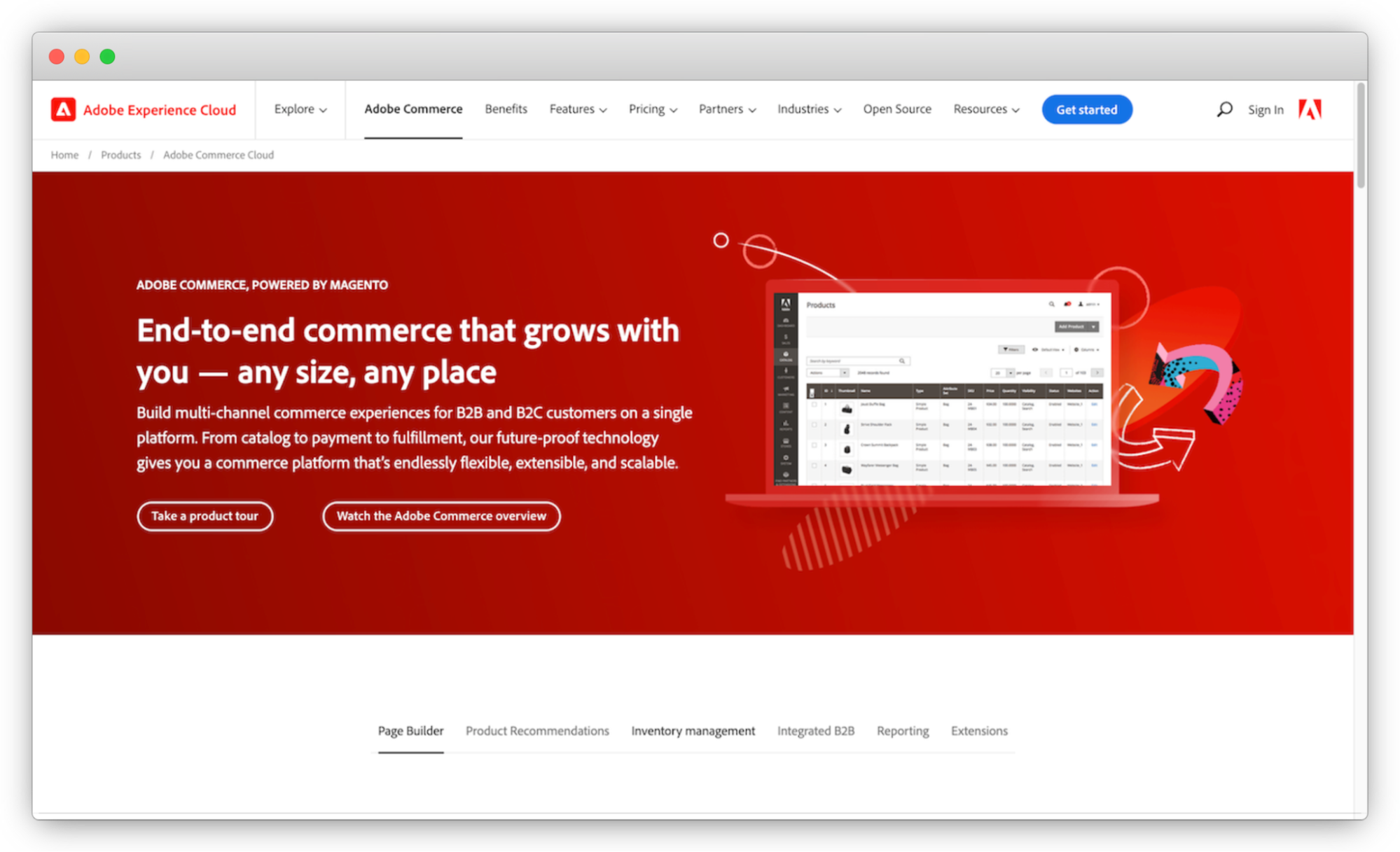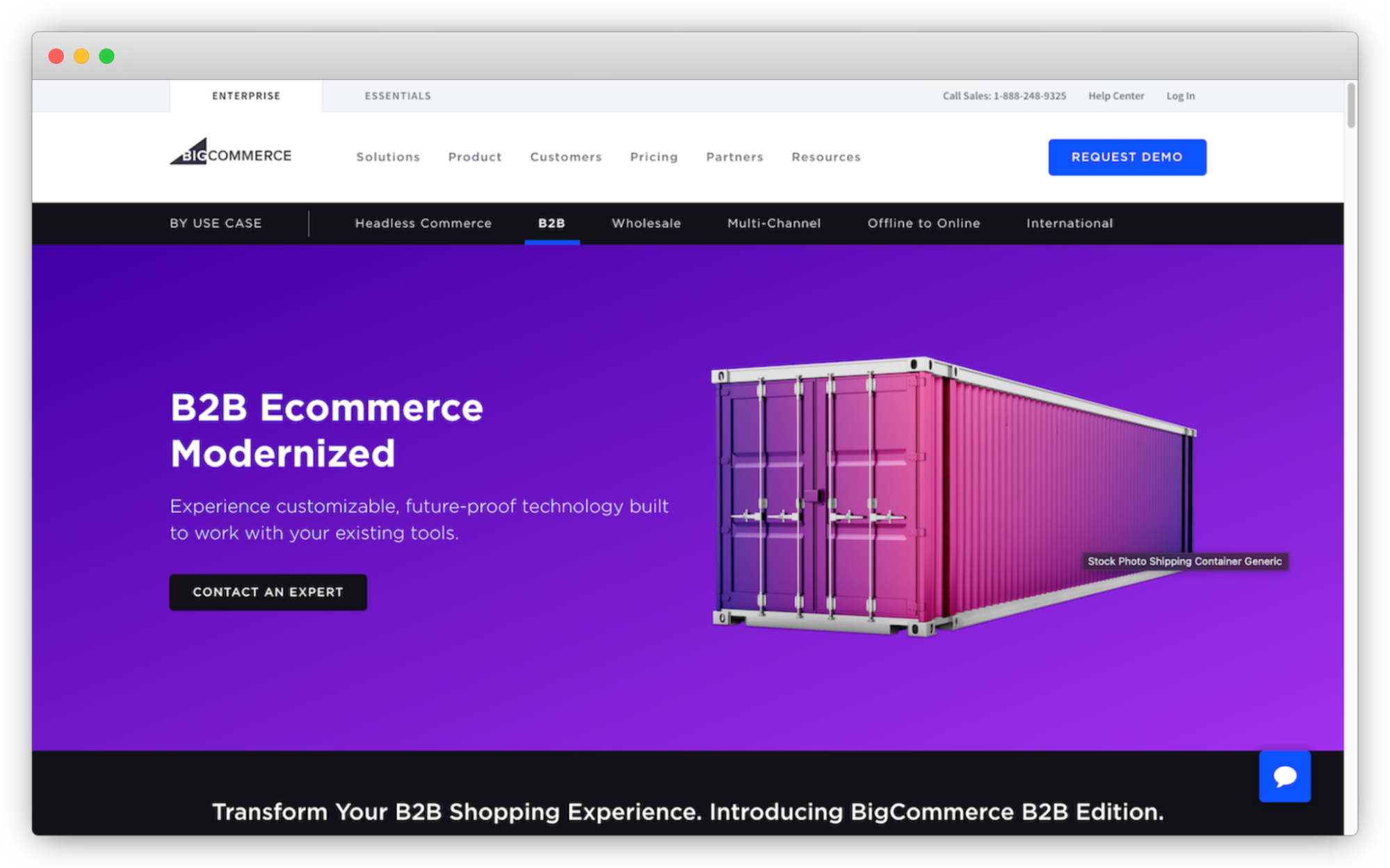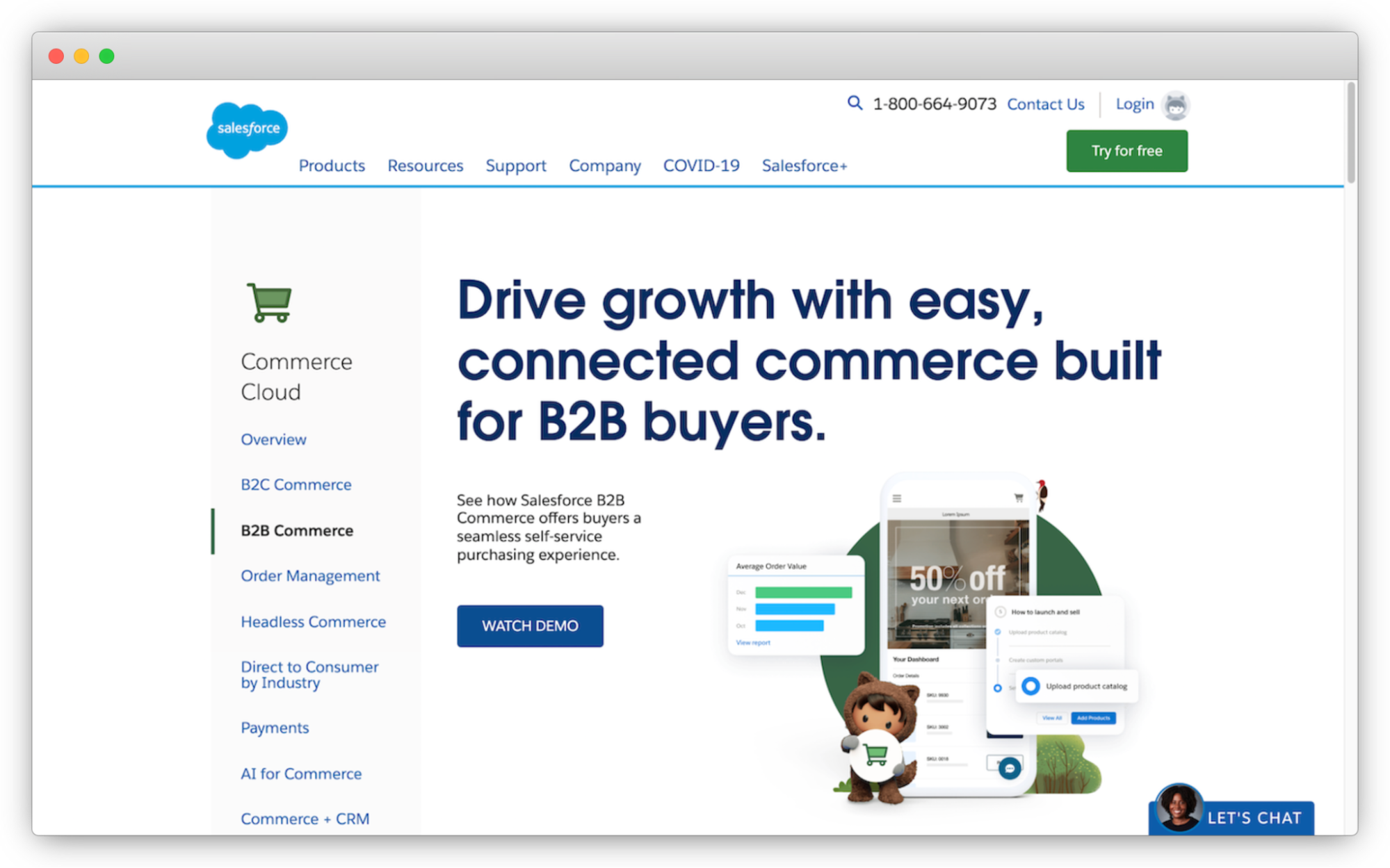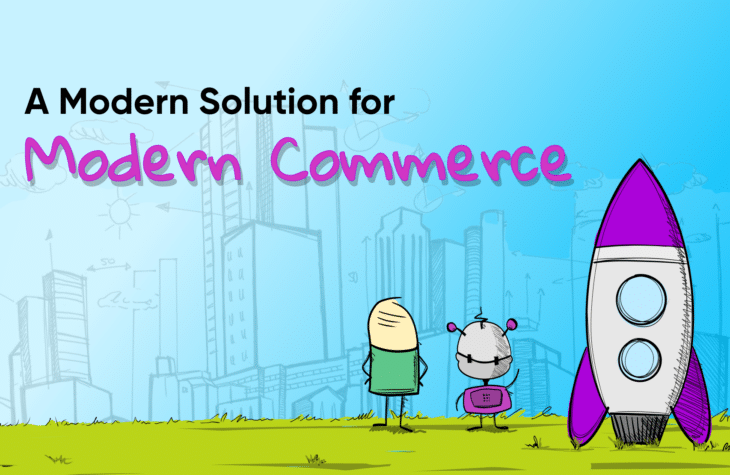The Top B2B E-Commerce Platforms in 2023
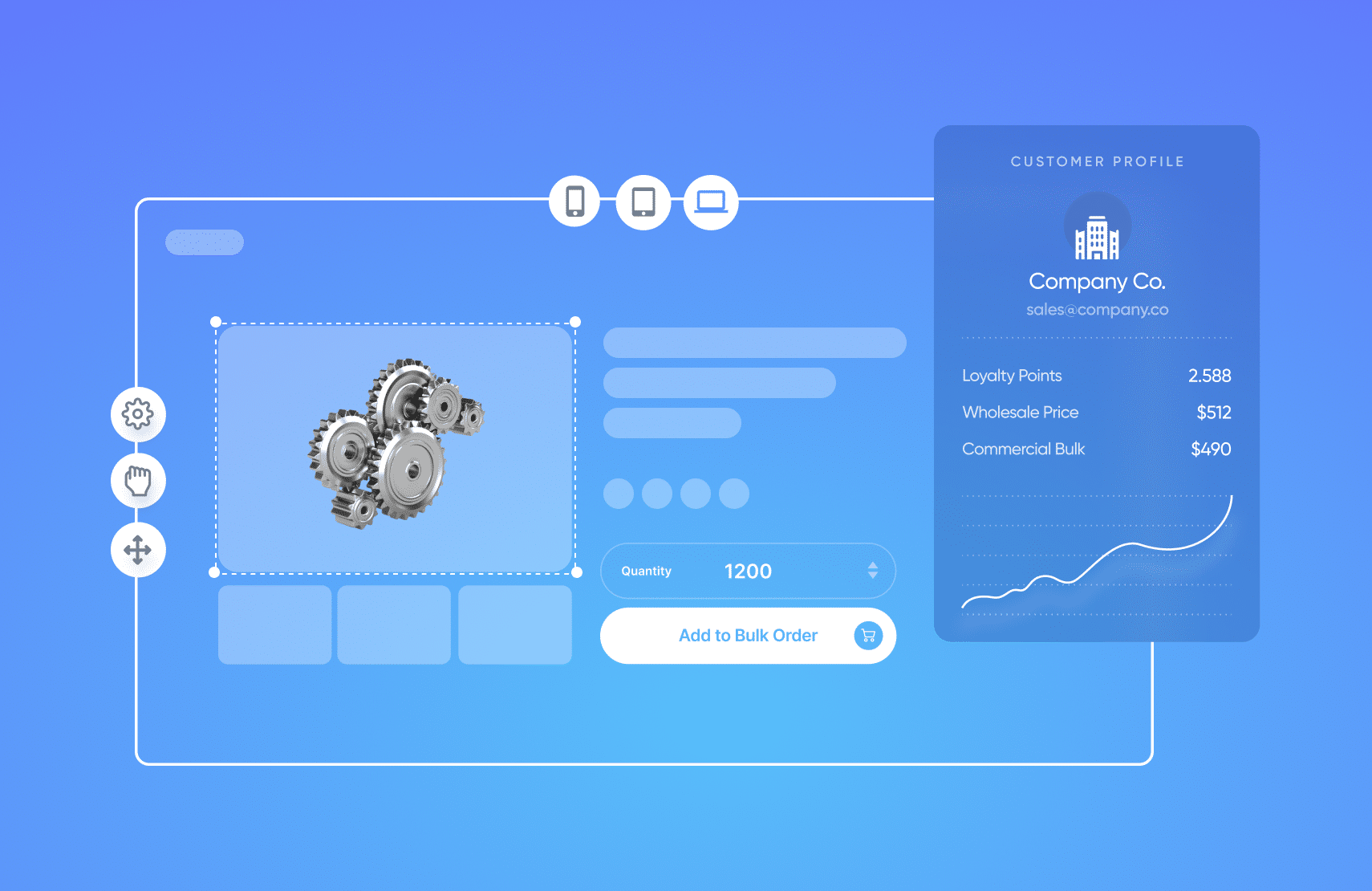
Currently worth $7.7 trillion, the B2B e-commerce sector is projected to be worth $25.65 trillion by 2028.
The B2B e-commerce sector popularized the importance and benefits of a customizable storefront, personalized pricing, simplified ordering, product information management, and digital payment options.
The top B2B e-commerce platforms include fabric, Adobe Commerce, BigCommerce, and Salesforce, which provide most of these features.
With a B2B e-commerce platform like fabric, businesses can create a truly unique customer experience by licensing one feature at a time without having to commit to a fixed bundle of features.
B2B (business-to-business) e-commerce is a rapidly growing sector. Currently valued at $7.7 trillion, the global B2B e-commerce market is projected to be worth $25.65 trillion by 2028. This is because more businesses prefer to buy online than in person. 73% of these buyers are millennials that expect an Amazon-like experience.
Selling to other businesses has never been easy. There are a lot of heads to please in the buyer organization, which makes it extra challenging and time-consuming. Old ways of selling do not scale, and as a result, salespersons end up spending more time entering high volume, low-value orders as opposed to deepening relationships with strategic customers.
To get to the next level of growth, it is important for the traditional manufacturing, wholesale, and B2B retail businesses to identify and acknowledge this barrier and act on it quickly by building their e-commerce muscle for low-touch customers. The right B2B e-commerce platform can help by reducing friction in the buying and selling process, improving sales efficiency, and streamlining business operations.
Features of B2B E-Commerce Platforms
76% of B2B buyers are disappointed with their shopping experience. Let’s look at some of the most important features top B2B e-commerce platforms have that do not disappoint buyers.
| Feature | How it’s used |
| Customizable storefront | It helps to design, create, and optimize the customer experience online—all without code. |
| Personalized pricing | It offers tailored pricing, quantity discounts, and promotions. |
| Simplified ordering | Customers can place bulk orders, track, and easily reorder previously purchased products. |
| Product information management | It helps to create, manage, and enrich SKUs on one platform. |
| Digital payment options | It integrates with the existing platform to process payments via credit cards, debit cards, and digital wallets. |
Customizable storefront
The storefront shapes the first impression consumers have. 38% of consumers will stop browsing a storefront that is unappealing. Moreover, 42% of consumers are very unlikely to make a purchase.
With a customizable storefront, designers and marketers can customize prebuilt components to represent their brand best. Those components include beautiful homepages, category pages, and product detail pages (PDPs), all of which are crucial to delivering an exceptional customer experience.
With ever-changing consumer expectations, it is equally important to deploy changes quickly to a storefront. For example, a store that takes weeks to deploy a new feature, such as free shipping or a regional promotion, will likely lose customers to a competitor who can deploy those features in minutes.
Personalized pricing
MarTech Advisor discovered that sales increased by 19% due to personalization. Furthermore, 73% of B2B buyers look for a personalized experience. Offering tailored pricing, quantity discounts, and promotions based on customer types and products help to create a personalized experience (and increases sales).
With pricing and promotions software, a B2B vendor can set up multiple price types for any product or product category for a certain duration. With regards to promotions, a B2B vendor can schedule them so they automatically apply when a customer is checking out.
It is important to leverage software with AI-powered insights to stay competitive in the rapidly changing market and maximize profits. Using a standard pricing strategy can lead to losing customers due to either too low or high pricing.
Simplified ordering
The e-commerce ordering process involves a series of steps to fulfill a customer’s purchase efficiently. As B2B orders are more complex than B2C ones, the B2B e-commerce ordering process is also more complicated. Simplifying the B2B e-commerce ordering process is a sure way to fulfill orders as promised and retain customers.
An order management system (OMS) software makes the ordering process easy for customers and employees by semi-automating workflows. Customers can view purchase history, save and share shopping lists, reorder products, and use POs to place orders.
Employees can create, manage, and track all customer orders on one platform while also automatically updating customers on the progress of their orders. When a customer purchases or returns inventory, the OMS software updates inventory in real-time, ensuring customers only purchase in-stock items.
Product information management
98% of shoppers stated they would not purchase an item due to incomplete product information. Thus, it is essential to manage product data (including images) to provide great PDPs and catalogs that turn visitors into customers.
A product information management (PIM) software alleviates the burden of managing large amounts of product data by providing a central storage repository. A PIM software continuously enriches product data based on the market and customer-centric insights.
The way customers are discovering, evaluating, and purchasing products is constantly changing. Businesses can easily import, enhance, and organize SKUs with PIM software. If any issues affect the buying experience, the centralized tool identifies them so businesses can make edits to help customers find products easier, such as product attribute groups.
Digital payment options
With the average cart abandonment rate of online stores at 69.8%, there are various reasons why a consumer will abandon their cart. Offering a broad range of payment options helps to reduce cart abandonment by creating a frictionless checkout experience.
Besides integrating traditional payment methods, such as checks, trade credit, and ACH and wire transfers, certain B2B e-commerce platforms easily integrate with the existing commerce platform to process payments via credit cards, debit cards, and digital wallets, like Apple Pay and Google Pay. Doing so helps to detect and block fraudulent payments and provides extensive support for managing disputes and refunds.
Top B2B E-Commerce Platforms
B2B e-commerce platforms excel at offering various features that automate workflows and turn visitors into customers. The top four B2B e-commerce platforms are ranked below.
fabric
fabric offers a team of B2B commerce experts to help drive digital growth on a business’s own terms and pace. Customers have the flexibility to buy the end-to-end solution or platform components, such as fabric XM, Offers, OMS, and PIM.
Its B2B e-commerce platform can easily plug into existing ERP, CRM, WMS, and more, maintaining a business’s continuity while it upgrades its customer experience. Moreover, a commerce-ready website will be up and running in a matter of weeks as opposed to months of implementation time that most monolithic e-commerce platforms take.
Adobe Commerce
Adobe Commerce provides B2B merchants extensive integrations, intelligent workflows, the agility to handle spikes in traffic, and the foundation to grow seamlessly. Their features include a customizable page builder, customer-specific pricing, and inventory and order management. Customers can access these features with the Adobe Commerce Pro, an all-in-one package for merchants of any size or business model.
BigCommerce
With BigCommerce, B2B merchants can create a robust, differentiated e-commerce experience without compromising security, stability, or scalability. The platform empowers businesses to optimize growth with customizable storefront designs, customized pricing, simplified bulk ordering, and digital wallet payment options. Businesses can try BigCommerce for 15 days before deicing on its Standard, Plus, or Pro package, which offers features for fixed prices.
Salesforce
Salesforce helps B2B vendors quickly launch customized digital ordering. It offers B2B buyers a seamless self-service purchasing experience with fast reorders and prebuilt payment solutions. The platform offers three different tiers: Starter, Growth, and Plus. A business can use a certain number of storefronts and sell a fixed amount of products depending on the tier it chooses. The tier level determines how many storefronts and products a business can sell.

Product management @ fabric. Previously b2b e-commerce @ Shipwire, Fiserv, Zong, and Google.
